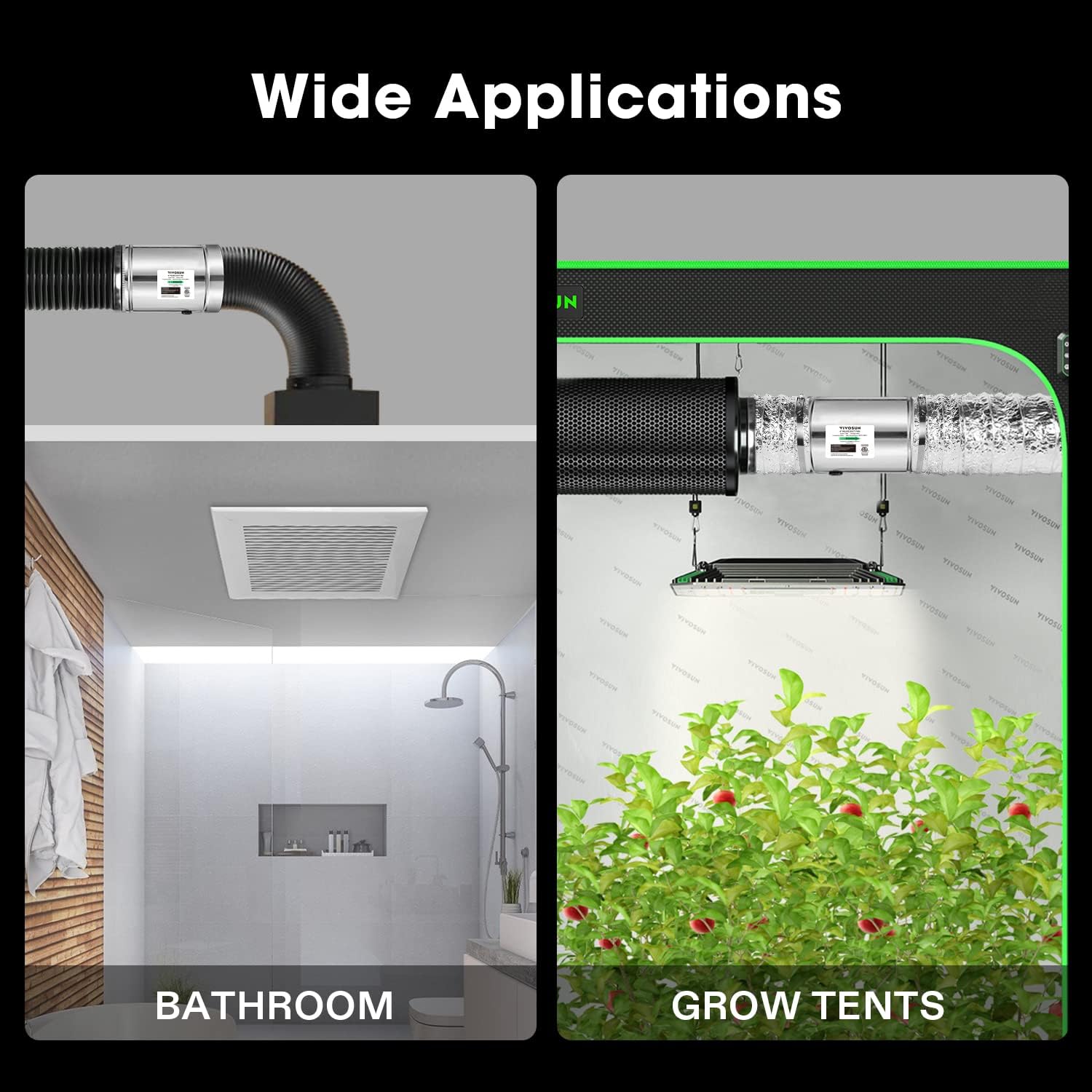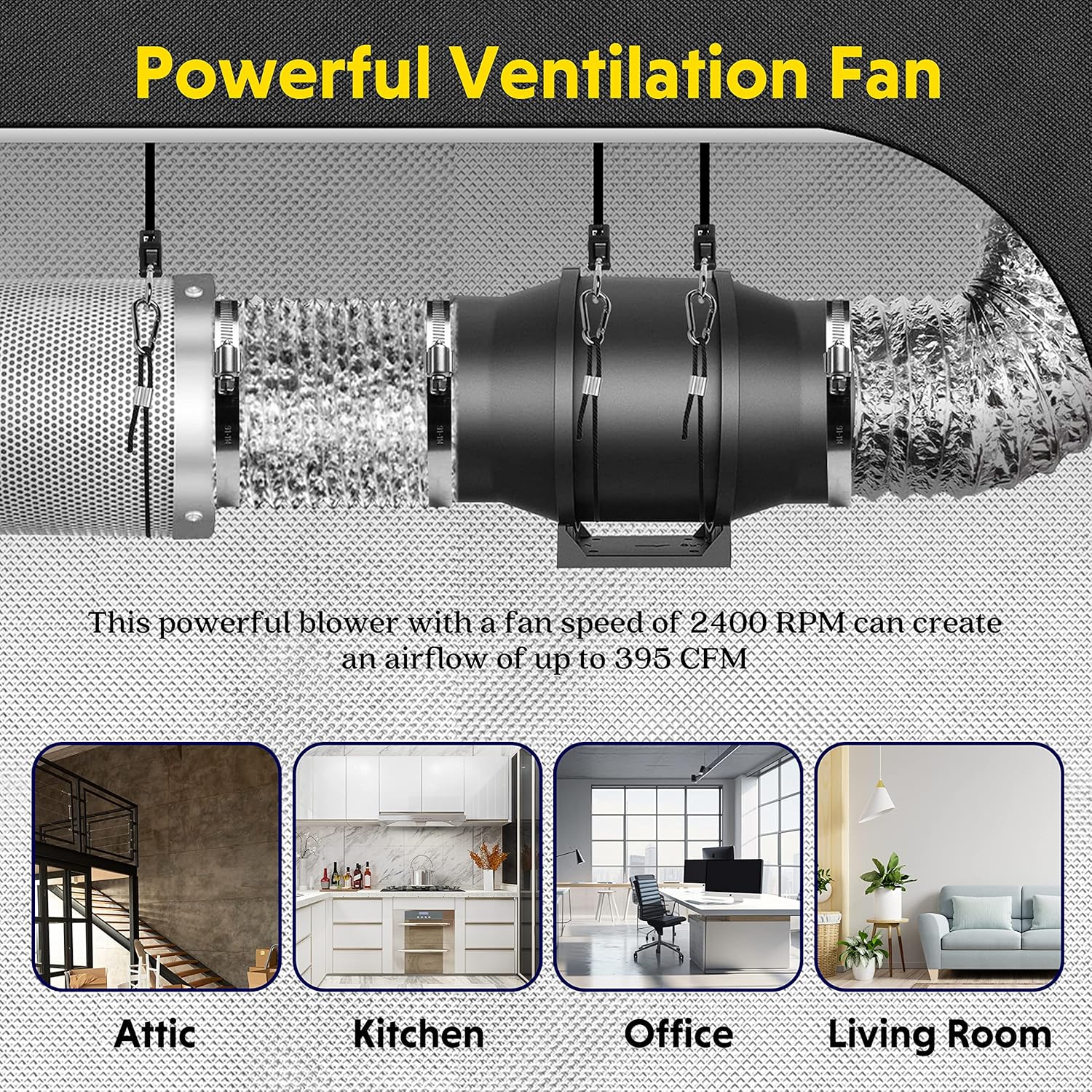Choosing the right ventilation solution is essential to maintain a healthy and comfortable indoor environment. Silent inline fan fans are a popular choice for their ability to effectively move air without adding destructive noise. However, the market offers a variety of options, from priority quiet operation to one designed for maximum airflow. Understanding the differences between these fans, such as quiet conduit fans versus high CFM duct fans, is key to choosing the ideal unit for your specific needs, whether it is for home, office or industrial environments.
Noise and power: Find the right balance

When choosing an inline conduit fan, the main trade-off is usually between the noise level and the ability to move air. The quiet tube fan is designed with aerodynamic-designed blades, reduced buck materials and precision motors, and can operate at almost unaudible levels. This makes them ideal for noise-sensitive environments such as bedrooms, offices, libraries or recording studios where peace and tranquility are crucial. On the other hand, high CFM tube fans (cubic feet per minute) prioritize fast moving large amounts of air. These fans are usually necessary for larger spaces, commercial kitchens, workshops or planting tents, and are more critical in effective ventilation and removal of contaminants, heat or humidity than whispering operations. While silent inline fans are designed to achieve balance, it is important to evaluate which trait (silence or force) is more important to your application. Sometimes the strongest fans are not the quietest, quietest fans may not be able to provide the highest airflow.
Application Questions: Residential and Commercial Requirements
The expected application significantly affects the type of fan required. For residential settings or smaller commercial spaces, such as a single office or bathroom, usually enough inline fans are enough. These units are designed to be compact, easy to install in standard ducts and provide adequate ventilation without being shocking. They often prioritize quieter operations, aligning with the needs of the home environment. Instead, commercial duct fans are built for more demanding scenarios. These robust units are designed for warehouses, large cafeterias, industrial workshops or a wide range of HVAC systems. They usually offer higher CFM ratings, more durable construction to withstand continuous operation, and may have different voltage requirements. While small inline fan fans and larger commercial pipe fans both have the basic purpose of moving air, their size, power, and sometimes noise output vary greatly to meet a variety of environmental needs.
Understand the benefits of "inline" across variants
The term "inline" refers to the design of a fan that can be installed directly in the operation of the pipe, rather than at the beginning (such as a traditional sash) or at the end (such as a typical bathroom ceiling fan). This design makes the ventilation fan of the inline conduit fan incredibly efficient. It can increase airflow in the long tube extension, which may otherwise lose air pressure or provide targeted ventilation for specific areas. An inline fan, a term that can often be used interchangeably or describes a fan with a specific type of impeller, can also benefit from the duct placement. This setup allows for a more simplified, often hidden installation, protecting space and reducing system noise, as the fan unit itself can be away from occupied areas, for example, in an attic or utility closet. Whether you are considering a quiet office or a more powerful workshop device, whether you are considering using a silent inline tube fan, this inherent advantage applies.
The main considerations of your choice and where to find them
When selecting an inline tube fan, several factors must be weighed. Consider the size of the space that needs ventilation, which will help determine the required CFM. Consider the main purpose: Is it used for general air circulation, odor removal, humidity control or heat extraction? Your tolerance for noise is another key aspect. Quiet fan fans are essential for living areas or working areas, and in utility spaces, a more powerful fan may be acceptable. Installation limitations, pipe size and energy efficiency are also important considerations. Companies like Ningbo Aoshun Electrical Co., Ltd. understand these different customer needs and have flexibility in designing and producing innovative electrical products. Their commitment to a “one-stop purchase that meets all electrical needs” means they can cater to wholesalers, buyers and retail customers, providing a range of options from versatile inline blowers fans to professional business units to ensure you find the right fit.
Make an informed decision: Silent, powerful or both?
Ultimately, the choice between different types of inline duct fans (such as silent inline fan fans vs. standard models), or a small inline fan fan with larger commercial duct fans, boils down to careful evaluation of your specific requirements and priorities. While high CFM tube fans perform well in moving large volumes of air, their noise output can be a problem in some settings. Conversely, an unusually quiet fan may not provide adequate airflow for larger or more demanding environments. The good news is that the advancements in fan technology provided by experienced manufacturers like Ningbo Aoshun are increasingly blurred, offering powerful and quiet solutions. By understanding these comparisons, you can make informed decisions and ensure optimal air quality and comfort in the space with the right inline duct fans. Their logistical capabilities, including marine, air, express and rail options, ensure that these solutions are accessible worldwide.



